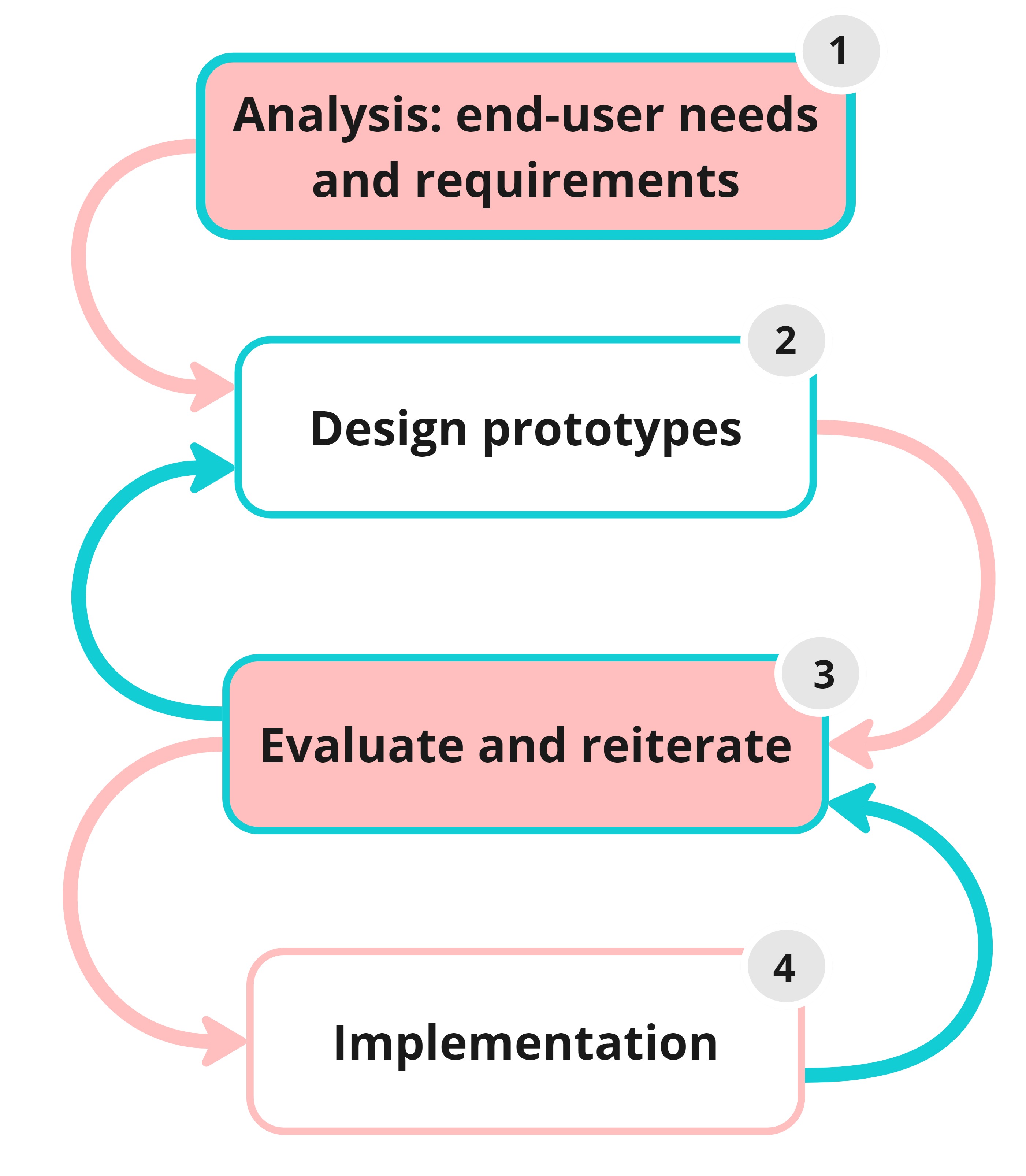Co-design, as a method, can sit nicely within development approaches that continuously value having users involved across the process - from product conceptualisation to deployment and beyond.
Participants involved in co-design often collaborate with MDTs early in the design phase, typically assisting with understanding the requirements, specifications and context for use. Sometimes, they may be involved in design work, offering feedback on proposed models or layouts. Rarely are they involved further into the testing or evaluation stages, where they can offer valuable feedback and research data to help optimise solutions.
Problem-based selection of a development approach aligning with co-design
User-centred design and design thinking are similar development approaches where co-design can be embedded. Both approaches are considered fundamental to designing user-centred technology and digital products effectively.
Commonalities between User Centred Design and Design Thinking approaches :

Both approaches share the need to:
- Place the user at the forefront of design,
- Empathise with their lived experiences to identify needs and requirements,
- Work together with end-users to problem solve to find potential solutions,
- Test, reiterate, and re-test cycles of prototype designs and
- Collaborate widely with stakeholders and users across the process.
A suitable approach can be chosen once the problem's characteristics are considered.
User-centred design (UCD)
User-centred design (UCD) approach is typically applied when the problem identified is well-defined, and the solution created specifically addresses the end user's requirements so they can complete a task or activity successfully.
UCD is a four step of continuous design/re-design, evaluation and refinement involving users to generate feedback and data across the development process.

Within UCD, participants can collaborate through co-design and contribute to:
- Stage 1 - Identifying requirements and needs.
- Stage 2 – Designing and refining prototype design.
However, representatives should also be invited to be involved in later stages to evaluate and provide feedback in:
- Stages 3 and 4 - Test prototypes to provide feedback to support implementation and improve usability and user experience.
Within aged care organisations, problems or issues relating to digital transformation or innovating for widespread innovative change can make design thinking a preferable approach. [1]
Design Thinking (DT)
Unlike UCD, design thinking considers how the user's needs shape the innovation whilst balancing the feasibility and economic viability of the product. [1] Compared to the UCD approach, the DT has six steps. The two additional steps, 1) problem discovery through empathy and 3) ideation of potential solutions, can support MDT in addressing the following:
- Broad or complex problems,
- Issues impacting systems, service or care models, or
- Problems that are wicked in nature. [1, 2]
DT should be considered as a suitable approach for technology design, given the openness and complexity of aged care systems. DT works well within a systems thinking approach [3] to understand the wide-ranging implications of digitally innovating internally and the potential downstream effects on the broader interactions with Government platforms, software or systems.
- Further, design thinking promotes redefining issues to identify possible alternatives that are innovative and novel. Typically, these solutions are not immediately observable and can be found by pushing the possible limits. [3]

Participants can collaborate in co-design activities in the initial stages of DT:
- Stage 1 - Deeply understanding their users to identify needs and requirements.
- Stage 3 - Create new and novel ideas to solve the problem.
Just like UCD, representatives from groups involved in the co-design of the product should be invited to participate in evaluating prototypes and generating data during:
- Stage 5 - Testing low and high-fidelity prototypes.
- Stage 6 - Generating data and feedback to understand levels of success during implementation.
A suitable approach can be chosen once the problem's characteristics are considered. There are examples of design thinking models and framework approaches to development found within the literature. These include:
- IDEAS: Integrate, Design, Assess, and Share [4]
- Engage, plan, explore, develop, decide and change [5]
- IoT Participatory Method for Home Care Solutions (IoT-PMHCS) [6]
- Senior DT [7]
Different types of research activities can support each stage of development. Selection should depend on the activity's goals, the capability and availability of participants and the amount of time or resources.